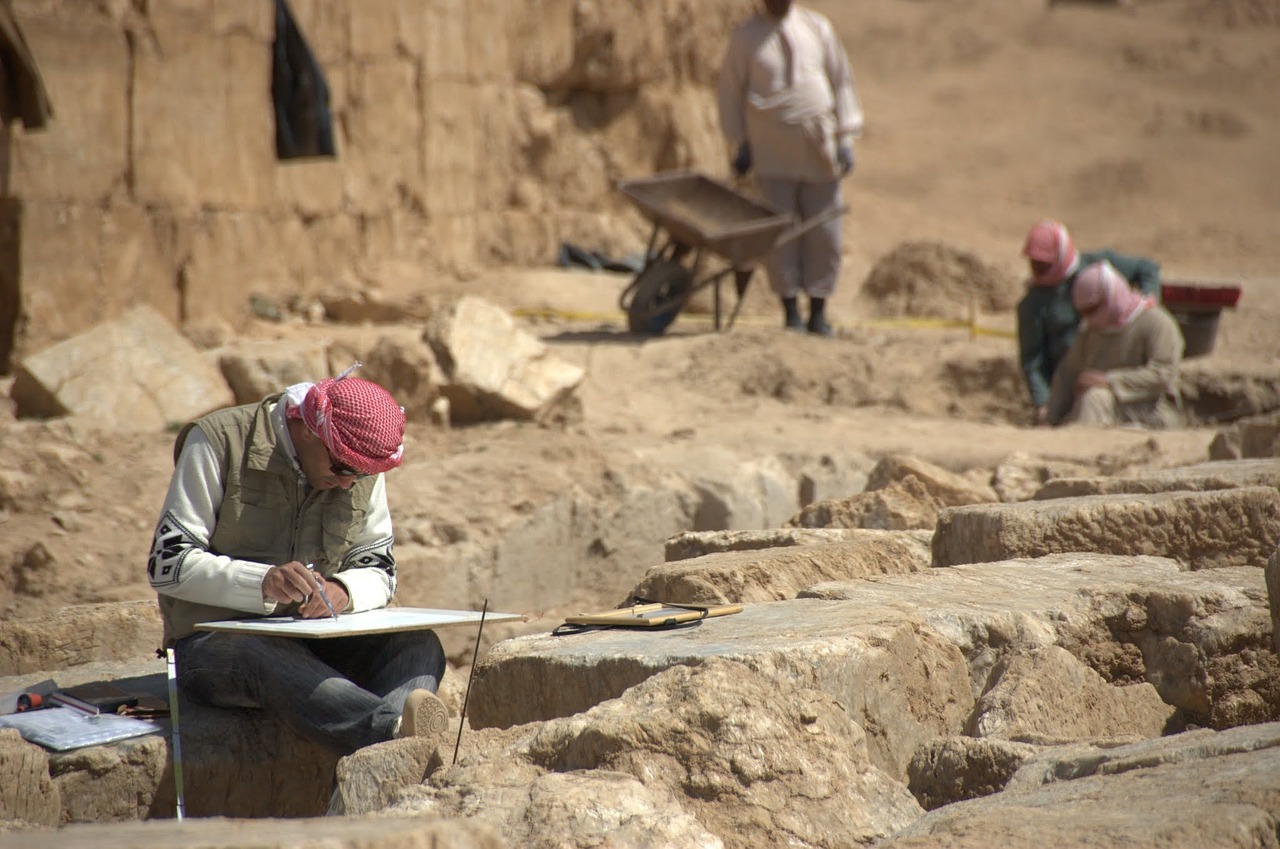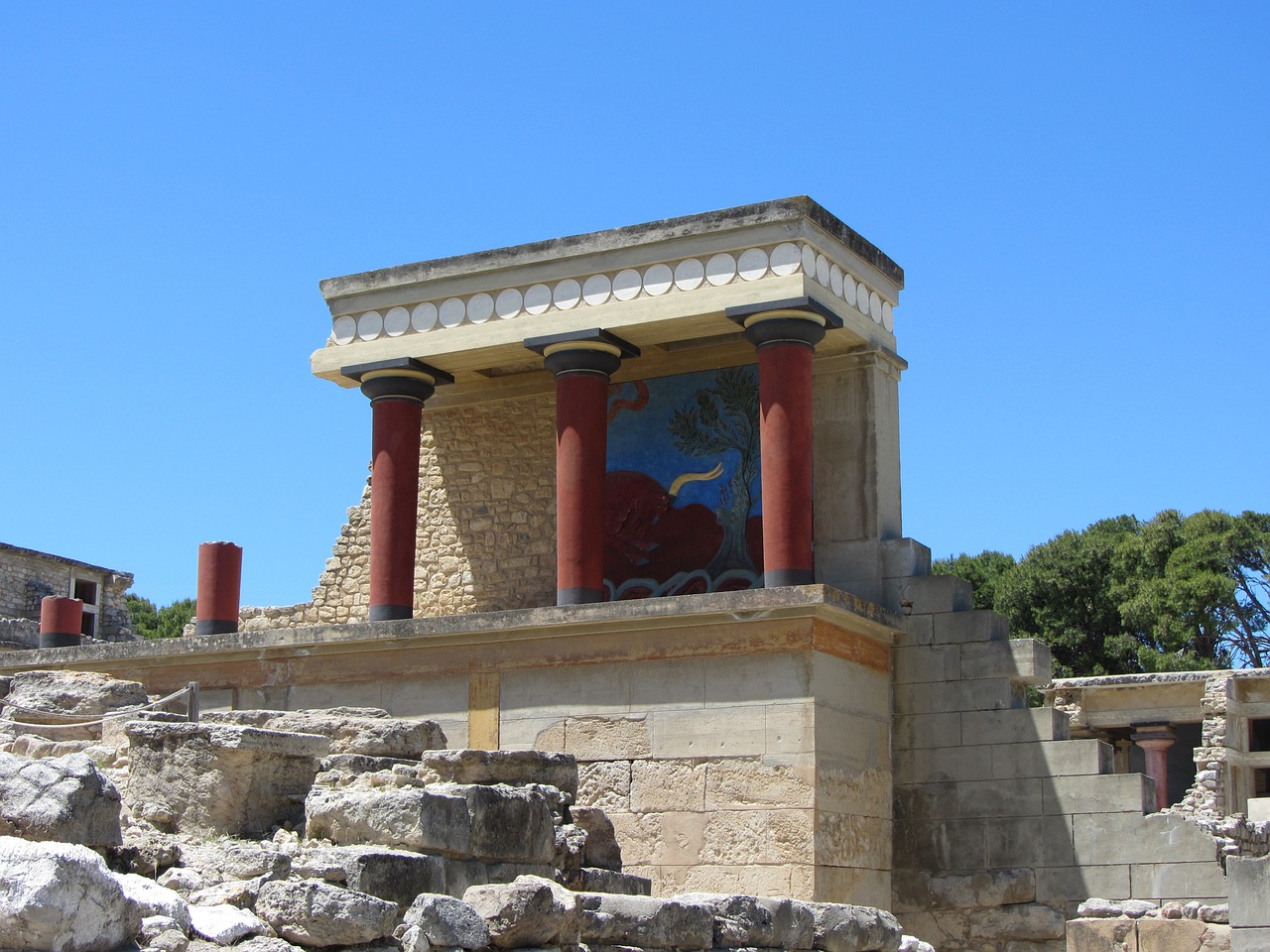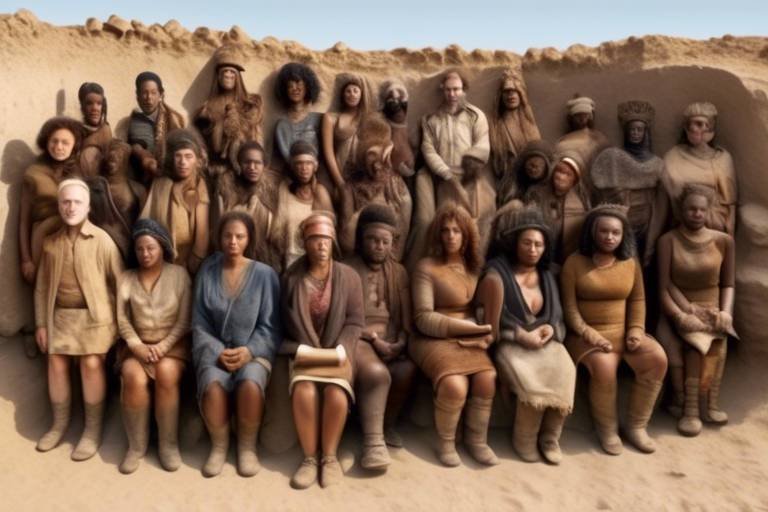The Importance of Storytelling in Archaeological Tourism
Storytelling plays a crucial role in enhancing the visitor experience at archaeological sites, offering a unique way to connect people to the past through engaging narratives. By weaving stories into the historical fabric of these ancient civilizations, storytelling brings history to life, creating memorable and immersive experiences that resonate with modern-day tourists.

Connecting Visitors to the Past
When visitors step onto an archaeological site, they are not merely looking at ancient ruins; they are embarking on a journey through time. Through the art of storytelling, these visitors are transported back to a world long gone, where civilizations thrived and cultures flourished. By weaving narratives that intertwine the past with the present, storytellers have the power to connect visitors to the rich history that lies beneath their feet.
Imagine walking through the remnants of an ancient city, guided by a storyteller who paints vivid pictures of daily life, rituals, and triumphs of the people who once inhabited these grounds. Through storytelling, visitors can envision the bustling streets, hear the echoes of long-forgotten languages, and feel the pulse of a bygone era.
Storytelling serves as a bridge between the past and the present, allowing visitors to not only observe history but to experience it firsthand. It fosters a sense of empathy and understanding, enabling modern-day tourists to relate to the struggles and triumphs of ancient civilizations. By immersing visitors in captivating narratives, storytelling transforms a simple visit into a profound and unforgettable journey through time.

Preserving Cultural Heritage
Preserving Cultural Heritage is a crucial aspect of archaeological tourism, as it involves safeguarding and promoting the rich history and cultural significance of ancient sites for present and future generations. By incorporating storytelling into the preservation efforts, archaeological sites can come to life through engaging narratives that highlight the importance of these heritage sites.
Storytelling plays a vital role in creating a connection between visitors and the cultural heritage being preserved. Through immersive storytelling experiences, visitors can develop a deeper appreciation for the historical significance of archaeological sites and gain a better understanding of the traditions and practices of past civilizations.
Moreover, by engaging visitors in meaningful and educational storytelling sessions, the cultural heritage is not only preserved but also actively promoted. Visitors become ambassadors for these sites, spreading awareness about the importance of preserving archaeological treasures and encouraging others to experience the magic of storytelling firsthand.
Additionally, storytelling helps in instilling a sense of responsibility towards cultural heritage in both local communities and tourists. By involving local communities in the preservation and presentation of archaeological sites, storytelling empowers them to take ownership of their heritage and actively participate in its conservation for the benefit of future generations.
Furthermore, through the preservation of cultural heritage via storytelling, archaeological sites can become sustainable attractions that contribute to the local economy and promote cultural exchange. By incorporating storytelling into the management and interpretation of these sites, a balance can be achieved between conservation efforts and visitor engagement, ensuring the long-term sustainability of archaeological tourism.

Engagement Through Interpretation
Storytelling serves as a powerful tool for interpretation at archaeological sites, captivating audiences and sparking curiosity about the historical significance of these ancient locations. By weaving narratives that connect the past to the present, visitors are drawn into a world where history comes alive through engaging stories and vivid imagery. Through storytelling, visitors are not just passive observers but active participants in unraveling the mysteries of the past.

Emotional Connection to History
When it comes to exploring archaeological sites, it's not just about seeing ancient ruins or artifacts; it's about connecting with history on a deeper level. Storytelling plays a crucial role in creating an emotional connection to the past, allowing visitors to feel a sense of empathy and understanding towards ancient civilizations. By weaving narratives that highlight the struggles, triumphs, and daily lives of people long gone, storytelling brings history to life in a way that textbooks or guided tours simply cannot.
Imagine standing in the shadow of an ancient temple, listening to tales of the priests who once walked its halls, or picturing the bustling streets of a long-forgotten city as stories of its inhabitants unfold before your eyes. These emotional connections to history not only make the past more relatable but also leave a lasting impact on visitors, inspiring them to learn more and delve deeper into the mysteries of bygone eras.
Through storytelling, visitors can immerse themselves in the rich tapestry of human experience, feeling the joy, sorrow, and wonder of past civilizations as if they were walking alongside them. This emotional journey through history transforms a simple visit to an archaeological site into a profound and unforgettable experience, where the echoes of the past resonate in the hearts and minds of modern-day explorers.
Moreover, by fostering emotional connections to history, storytelling encourages visitors to become active participants in preserving and sharing cultural heritage. When people feel a personal stake in the stories of the past, they are more likely to support efforts to protect archaeological sites and ensure that future generations can also experience the magic of connecting with history.

Enhancing Visitor Experience
Enhancing the visitor experience at archaeological sites goes beyond just providing information; it involves creating a journey that immerses visitors in the history and culture of the past. By incorporating storytelling into the experience, visitors are not just passive observers but active participants in a narrative that brings the site to life.
Imagine walking through the ruins of an ancient city, guided by a storyteller who paints vivid pictures of daily life, rituals, and events that once took place there. Instead of just seeing stones and artifacts, visitors are transported back in time, experiencing the sights, sounds, and emotions of the past.
Storytelling adds layers of depth and context to the visitor experience, making it more than just a sightseeing tour. It creates a connection between the present and the past, allowing visitors to not only learn about history but to feel it, to empathize with the people who lived in those ancient times.
Moreover, storytelling can cater to different types of visitors, from history enthusiasts to casual tourists, by offering various narratives that appeal to a wide range of interests. Whether it's a thrilling tale of ancient battles, a poignant story of love and loss, or a humorous anecdote about daily life, storytelling can engage visitors on emotional and intellectual levels.
Furthermore, by enhancing the visitor experience through storytelling, archaeological sites can differentiate themselves from other attractions, creating a unique selling point that attracts and retains visitors. A well-crafted narrative can turn a visit to a site into a memorable experience that visitors will cherish and share with others, thus boosting the site's reputation and attracting more visitors in the future.

Interactive Learning Opportunities
Interactive learning opportunities at archaeological sites offer visitors a unique chance to engage with history in a hands-on and immersive way. By incorporating storytelling into educational programs, visitors can actively participate in activities that bring ancient civilizations to life. These experiences not only educate but also inspire curiosity and a deeper appreciation for the cultural heritage preserved at archaeological sites.
Through interactive learning, visitors can explore artifacts, participate in archaeological digs, and engage in role-playing activities that simulate life in ancient times. These hands-on experiences create a dynamic and memorable way to learn about history, making the past more tangible and relatable to modern-day audiences.
Moreover, interactive learning opportunities can cater to visitors of all ages and backgrounds, making archaeological tourism accessible and engaging for diverse audiences. By fostering a sense of discovery and exploration, storytelling enhances the overall visitor experience and encourages a deeper connection to the historical narratives presented at archaeological sites.

Community Involvement and Empowerment
Community involvement and empowerment play a crucial role in the preservation and presentation of archaeological sites. By engaging local communities in the storytelling process, these sites become more than just historical landmarks - they become living representations of shared heritage. Through active participation, community members can contribute their unique perspectives and insights, enriching the narratives and deepening the connection to the past.
One way to involve communities is through collaborative projects that allow them to take ownership of their cultural heritage. By empowering locals to share their stories and traditions, archaeological sites can become hubs of cultural exchange, fostering a sense of pride and belonging among residents. This not only enhances the visitor experience but also ensures the long-term sustainability of these sites, as communities become invested in their preservation.
Furthermore, community involvement can lead to economic empowerment, creating opportunities for local businesses and artisans to showcase their products and skills to a global audience. By incorporating traditional crafts and practices into the visitor experience, archaeological tourism can support sustainable development in the surrounding areas, benefiting both residents and tourists alike.
Through storytelling that incorporates the voices and perspectives of local communities, archaeological sites can transcend their historical significance and become vibrant centers of cultural exchange and empowerment. By fostering a sense of ownership and pride among residents, these sites can ensure their preservation for future generations, creating a legacy that is truly shared and cherished by all.

Sustainability and Future of Archaeological Tourism
Exploring how storytelling enhances the visitor experience at archaeological sites, connecting people to the past through narratives that bring history to life and create memorable and engaging experiences.
Using storytelling to bridge the gap between ancient civilizations and modern-day tourists, fostering a deeper understanding and appreciation of archaeological heritage through immersive narratives.
Highlighting the role of storytelling in preserving and promoting cultural heritage, safeguarding archaeological sites by engaging visitors in meaningful and educational experiences.
Discussing how storytelling serves as a powerful tool for interpretation, captivating audiences and sparking curiosity about the historical significance of archaeological sites.
Exploring how storytelling evokes emotions and creates personal connections to the past, allowing visitors to empathize with ancient civilizations and their cultural achievements.
Examining how storytelling enriches the visitor experience at archaeological sites, transforming a simple tour into a memorable journey through time and history.
Showcasing how storytelling offers interactive learning opportunities for visitors, encouraging active participation and a deeper engagement with archaeological narratives.
Highlighting the role of storytelling in involving local communities in the preservation and presentation of archaeological sites, empowering them to share their heritage with the world.
Discussing the sustainable practices and innovative approaches in archaeological tourism that incorporate storytelling to ensure the preservation and promotion of cultural heritage for future generations.
Frequently Asked Questions
- What is the significance of storytelling in archaeological tourism?
Storytelling plays a crucial role in enhancing the visitor experience at archaeological sites by connecting people to the past through immersive narratives. It brings history to life, creating memorable and engaging experiences that foster a deeper understanding and appreciation of archaeological heritage.
- How does storytelling contribute to preserving cultural heritage?
Storytelling helps in preserving and promoting cultural heritage by engaging visitors in meaningful and educational experiences at archaeological sites. It safeguards these sites by sparking curiosity about their historical significance and encouraging active participation in learning about ancient civilizations.
- What are the benefits of using storytelling for interpretation at archaeological sites?
Storytelling serves as a powerful tool for interpretation, captivating audiences and evoking emotions that create personal connections to history. It enhances the visitor experience by transforming a simple tour into a journey through time, fostering empathy and a sense of connection with the past.
- How does storytelling involve local communities in archaeological tourism?
Storytelling empowers local communities to share their heritage with the world by involving them in the preservation and presentation of archaeological sites. It fosters community involvement and empowerment, ensuring that cultural heritage is sustained and passed on to future generations.



















